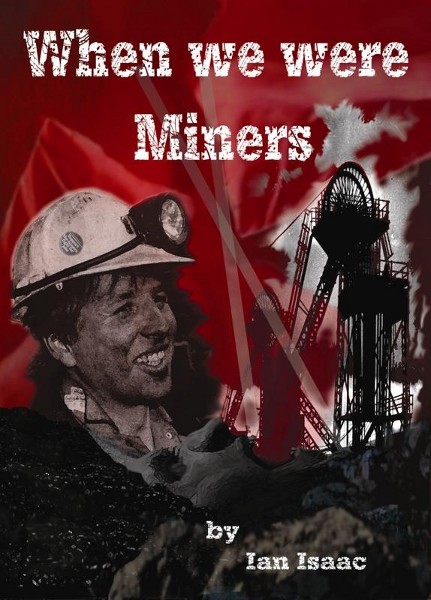Ian Isaac’s new book, published on the 25th anniversary of the end of the 1984/85 miner’s strike, is essentially an autobiographical account of the St John’s Lodge of the National Union of Mineworkers during the late 1970s and ‘80s. Ian was the youngest Lodge Secretary in the NUM at the time, a South Wales Executive member and a supporter of the Militant newspaper and Labour Party Young Socialists. The book will be fascinating for any young socialists or trades unionists who are interested in finding out the truth of what happened during that great strike.
Some academics may sniff their noses at historical accounts written by participants in those events, claiming that ‘objectivity’ is questionable in such works. Marxists, of course would argue that there is no such thing as objectivity, since every story is told from a point of view, a perspective. Indeed, most works of history are written by bourgeois academics reflecting the point of view of bourgeois society at the time of writing. Those which run counter to that view are rare indeed. This is such a book.
Ian Isaac’s new book, published on the 25th anniversary of the end of the 1984/85 miner’s strike, is essentially an autobiographical account of the St John’s Lodge of the National Union of Mineworkers during the late 1970s and ‘80s. Ian was the youngest Lodge Secretary in the NUM at the time, a South Wales Executive member and a supporter of the Militant newspaper and Labour Party Young Socialists. He also stood as the Miners’ Broad Left candidate for the South Wales Area President on the slogan of a ‘Miners’ President on a Miner’s Wage’.
The book will be fascinating for any young socialists or trades unionists who are interested in finding out the truth of what happened during that great strike. Aneurin Bevan famously once said ‘you show me your truth and I’ll show you mine’ and if you compare Isaac’s account to the many media ‘analyses’ which have taken place in recent months you will get a very different picture. In fact the miner’s leader, Arthur Scargill, who would undoubtedly loom large over most accounts, is a minor character in the book. More central are rank and file activists like Charlie White, the Lodge Chair and women in the miners’ wives support group. In the media, Labour Party and even to some extent mainstream trades unionists, many myths have grown up, not the least that the mining industry was destroyed by Scargill’s tactics and the militant struggle. Isaac questions this idea by comparing the NUM’s struggle with the Union of Democratic Mineworkers, the breakaway scab union which developed in the Nottingham mines, and the ultimate decimation of Nottingham mines.
“The UDM men under their president Roy Lynk had been the compromisers and had been set up with state aid and succour to undermine the NUM. Did they lose their jobs because their leaders were ‘too militant’? Because most of the time they were actually the opposite and too moderate and wheeling and dealing.”(p.122)
Isaac’s account of the growing militancy and radicalisation of St John’s Lodge and other rank and file miners in the South Wales area is evocative for those who were involved or on the periphery in the Miners’ Support Groups. But what is made crystal clear is that the old left, mainly around the Communist Party, were less committed to the strike than Scargill and all of the most striking and memorable features of the strike – the picketing run with military organisation, the speaking tours and logistically mind boggling support, came from the Broad Left based around the Militant and the LPYS. Every week each miner’s family was given a food parcel worth £3.95, the maximum amount the DSS would allow as a gift, and the lodge would feed 500 families at the height of the strike. He quotes another activist, Ken Smith, as estimating that £60 million was raised for the miners by the support groups over the strike as a whole! Throughout the account, Isaac contrasts the rank and file solidarity with the miners across the working class, with his experiences of the official TUC and the old ‘left’ leadership. And he at least is as clear now about the political reasons for the attack on miners and the justification for their stand, as he was 25 years ago.
This book should be read by anyone interested in militant trade union history. The writing is far from sentimental as a memoir and in fact somewhat modest about the strike in terms of its historical significance and Ian’s own heroism and commitment. There is no hint of self aggrandisement here and Isaac constantly pays tribute to the unknown heroes of the strike and the union and his political assessment is sound. Isaac’s sparse style is amazingly documentary-like and ‘objective’ considering the impact these events must have had on his life. Yet the political passion and solidarity of those working class communities soldered together in the heat of struggle makes this a book that is anything but academic and one that is genuinely difficult to put down.
